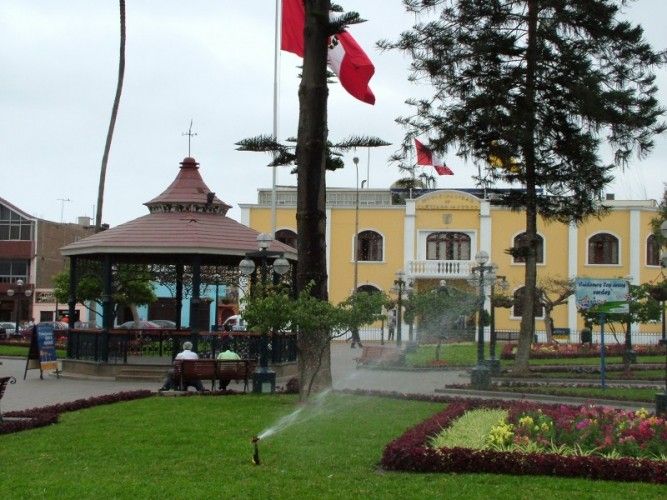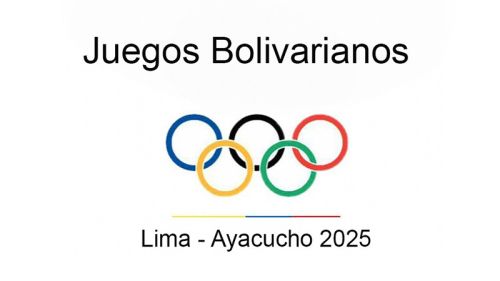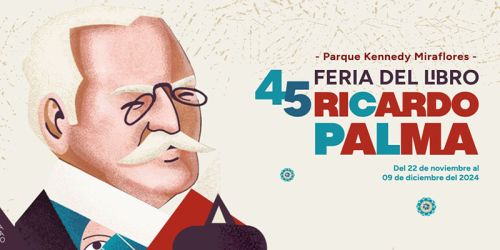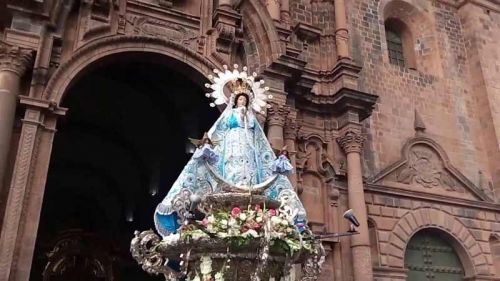Surco probably isn't one of the district tourists and visitors immediately will think of when coming to Lima. Only a few find their way to Surco. A fact, that doesn't do justice to the district. Surco probably has the best-kept green areas and parks (around 400) in Lima. Some of the more exclusive universities of Lima are located in Surco, including the University of Lima and the Universidad Ricardo Palma.
In Surco you find also many of Limas largest shopping centres like the "Jockey Plaza", the shopping center at the "Caminos del Inca", "Chacarilla" and "El Polo". In this district it is clearly visible that value is still placed on culture and traditions.
Facts & Figures about Santiago de Surco
The district of Santiago de Surco, commonly known simply as Surco, was officially established on the 16th of December 1929. The district has an area of 34.75 km². Due to its large area and location, Surco has inhabitants belonging to all socioeconomic levels. Some of the more exclusive universities of Lima are located in Surco, including the University of Lima and the Universidad Ricardo Palma. As mentioned before you will find in Surco many of Lima's largest shopping centres.
The district of Santiago de Surco is limited to the north by the districts of La Molina, Ate Vitarte and San Borja, to the east by the districts of La Molina, Villa Maria del Triunfo and San Juan de Miraflores, to the south by the district of Chorrillos and to the west by San Borja, Miraflores, Surquillo and Barranco.
Brief History of Santiago de Surco
Like most parts of today's Lima, Santiago de Surco was already inhabited long before the Spaniards arrived. After the conquest, in 1539 the Spanish conqueror Francisco de Carabantes planted on the fertile land the first vines, that became famous in the whole Limeñan area. The authorities noticed the value of this productive land combined with the mild climate. They decided to develop and cultivate the valley. Haciendas arose that were surrounded by fields, fruit trees and vine. Surco soon became a vacation spot for the high society of Lima. At this time the district covered the area of the current Surco but also other territories now belonging to the districts of Barranco and Chorrillos.
Around 1820, at the time of independence, Santiago de Surco became under the government of the liberator Simón Bolívar one of the only seven districts in Lima. Later in 1859 under the Republican government of Ramón Castilla it was one of 10 municipalities. During the War of the Pacific, Chileans soldiers invaded apart from today's districts of Miraflores, Barranco, Chorrillos as well Surco. After the Peruvian patriots were badly defeated, Santiago de Surco was plundered and burnt down. The district as we know it today was officially created on the 16th of December 1929.
Places to visit & attractions in Santiago de Surco
Plaza Mayor de Santiago de Surco
(Main Square)
The main Plaza of Surco was re-inaugurated in December 1997. Located in downtown Surco it is a beautiful small green oasis. As in many other districts of Lima the Plaza Mayor is the place where people meet and relax, especially at weekends. Here you find the Municipality of Santiago de Surco and the main church "Iglesia Santiago Apostol".
Iglesia Santiago Apostol
(Main Square)
Located at Plaza Mayor, the church of Santiago Apostol was constructed by the Jesuit Juan Rher in 1571. The church was built in baroque style, consisting of a single ship and an underground crypt. The main altar shows images of the Virgin of the Immaculate Conception, Santiago Apostol and Jesus of Nazareth. Opening hours are Monday to Friday from 09.00am to 01.00pm and from 02.00pm to 08.00pm.
Parque de la Amistad
(Friendship Park)
This park is located at corner of Av. Caminos del Inca with Calles Las Nazarenas in Surco. The Parque de la Amistad is the great park in Santiago de Surco, a popular place for young and old. One of the main attractions is an original steam locomotive from 1926. Like in old days visitors can enter an old train station, decorated with accessories from Peru's train history, buy a ticket and climb onto one of the three open wagons. The journey leads you 550m through the 30,000m² park area, passing the following highlights:
- An artificial lagoon, where you can rent a small pedal boat
- The copy of a Spanish Arc, the "Arco de la Amistad". This original Moorish arc constructed in 1924 on Av. Leguía, today's Av. Arequipa, was a present from the Spanish residents living in Peru. Unfortunately this arc was demolished in 1939 during the modernization of Lima. The copy of this sign of fraternity and friendship was inaugurated in 2001 by the king of Spain, Juan Carlos and his wife Sofia.
- The Cultural Center, that serves as a place for the exhibition of art and cultural and traditional events in Surco. It offers diverse ambiences for different happenings. The design was inspired by the old "Casa Haciendas" that were built on top of 'huacas'.
- After your train ride just relax in the beautiful surroundings on one of the benches in front of the Cultural Center or do some souvenir shopping. For kids you find a playground just at the entrance of the 'Parque de la Amistad.
Complejo Historico and Iglesia San Juan Grande
(Historical Complex and Church San Juan Grande)
The church San Juan Grande was constructed by the Jesuit order in 1752, using adobe bricks, cane, stone and wood. The inside is built in typical colonial style, decorated with amazing wall paintings. These paintings were re-discovered during restoration works on the quite deteriorated church in 1991 and 1992. In 1767, after disagreements between the Spanish King Carlos III and the Jesuit order, the Jesuits were expelled from all Spanish colonies and their properties were confiscated. The Hacienda and Iglesia San Juan Grande were abandoned by the Jesuit order and divided into a big and small part to be sold by auction later. Until the death of General Canevaro the church and hacienda were in possession of the military. Canevaro arranged in his last will that the assets of San Juan Grande were used for charity works.
In 1925 the "Ignacia R. de Canevaro" foundation was created. Since then this foundation looks after the property and dedicates their work to people in need. In 1972 the National Institute of Culture (INC) declared the estate to 'Historical Monument of the Nation'
The Historical Complex San Juan Grande can only be visited after previous coordination with the Subdivision of Culture, Education, Tourism and Sports, Phone 477-7272.
Parque Ecologico Loma Amarilla
(Ecological Park Yellow Hill)
The Ecological Park is located between the Avenidas Loma Umbrosa, Monte de los Suspiros, Monte de los Olivos and Bielich. Loma Amarilla is a natural land elevation with around 7.5 hectares, composed of flagstone. The park is a nice place to relax, wander around or enjoy the beautiful gardens and of course the small waterfall.
Plazuela de la Vendimia
(Square of the Grape Harvest)
Av. Ayacucho block 1, Surco
This small square opened on the 14th of March 1997. It is dedicated to the memory of the agro-industrial activities in Surco based on the grape and the importance of vine making in this district.
Parque Cesar Vallejo
(Park Cesar Vallejo)
Av. Precursores block 5, Chacarilla del Estanque, Surco
When celebrating the 105th birthday of the great Peruvian poet Cesar Vallejo, this park was inaugurated on the 19th of June 1997. The monument in the middle shows Cesar Vallejo in life-size.
Museo Oro & Armas
(Gold and Weapon Museum)
Of course you find as well some great museums in Surco that are worth a visit. One of the most visited is probably the Museo Oro & Armas (Gold and Weapon Museum). The private museum shows a collection of gold and silver from the different pre-Columbian cultures. The display also includes more than 20,000 pieces like: Weapons, horse mountings, uniforms and the sword of Francisco Pizarro (the Spanish conqueror and founder of Lima). For more information see our detailed museums site.
Museo Aeronáutico
(Aeronautical Museum)
Another beautiful museum you can visit is the Museo Aeronáutico (Aeronautical Museum). It shows the history and development of aviation in Peru. You find more info on our museums site.
Museo de Historia Natural
Universidad Particular Ricardo Palma
Worth a visit is also the "Museo de Historia Natural de la Universidad Particular Ricardo Palma". Located on Av. Benavides 5440 (Facultad de Biologia) in Surco. The museum gives an excellent overview of Peruvian flora and fauna.









































































































